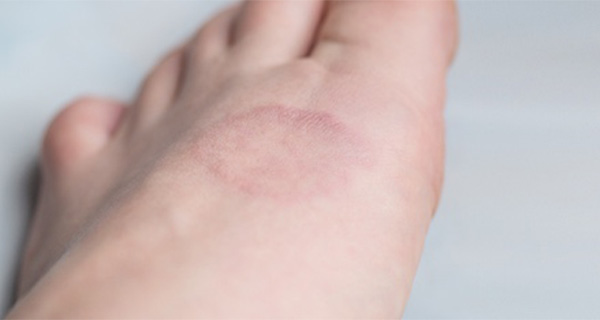

Granuloma annulare is one of the skin's mysterious rashes because the cause is almost always unknown. The rash is quite common, harmless, and causes little discomfort.
It appears as a ring-shaped, flat, elevated lesion with a slight darker color. The lesions are usually a few centimeters in size. There is often more activity and thickening at the outer edge of the rash. This sometimes leads to confusion with fungal rashes. However, there is minimal scaling and itch with granuloma annulare. The rash can occur anywhere, but it is typically seen on the wrists and ankles. The lesions tend to resolve slowly over time.

Granuloma annulare is a reaction where inflammatory cells accumulate in the dermis, causing thickening of the skin and weakening of the connective tissue. The disease can rarely be triggered by skin injuries (such as shingles) or underlying conditions (most commonly diabetes).
Treatment is not always necessary as the rash causes little discomfort. Moreover, in many cases, about half of them, it may resolve within two years. Topical steroid creams can be tried, but since the disease affects the deeper layers of the skin, steroid injections into the skin are often more effective. Other options include phototherapy by a dermatologist, cryotherapy or antimalarial drugs.
Several other treatments have been attempted, but none have proven to be very effective.